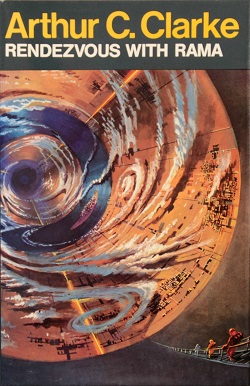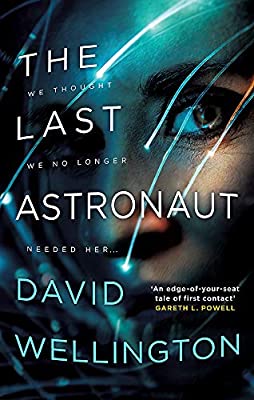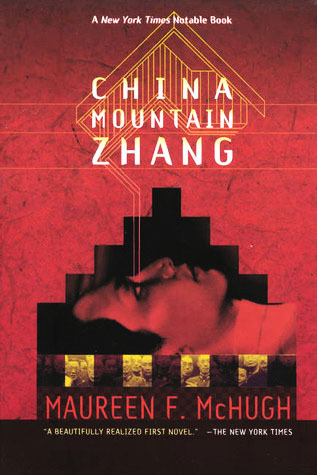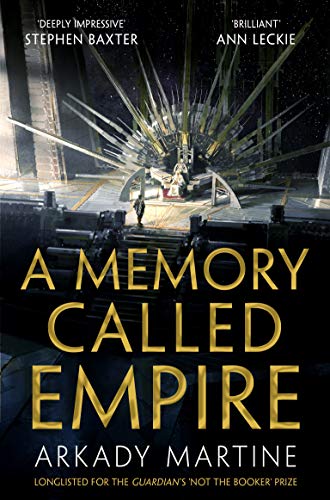Had it not been for the coronavirus pandemic, today would have seen hundreds of readers, writers, fans and artists touching down in New Zealand to attend ConZealand, the 78th annual World Science Fiction Convention. ConZealand was early to announce its plan to move the convention online and all kudos to everyone involved with what must have been a mammoth effort to rethink the event at relatively short notice. I’m sure there will be those, though, who will nonetheless be mourning the convention that might have been. Not only for the chance to meet up with those friends, colleagues and enthusiasts who look to conventions as the natural way to reconnect with the community after months scribbling away at their desks, but for what would have been for many a once-in-a-lifetime trip to a country they may have been dreaming of visiting for years before they booked their air ticket.
2020 will be the first year in ages that many of us – including myself – will not have attended a single science fiction convention. In order to celebrate the virtual opening of this year’s Worldcon (not forgetting the fabulous fringe for those of us on European time!) and in looking hopefully forward to the resumption of at least some physical con-going next year, I decided I’d like to read and assess the six novella category finalists for this year’s Hugo Award. It’s interesting to note that the shortlist in the novel category just happens to have a fifty-percent overlap with the Clarke shortlist (more on this in my Clarke summing up around the end of August/beginning of September) so I’ll have at least some idea of the overall vibe there, as well. But it seems to me that the novella category – and this could be said equally of other awards that choose to celebrate the form – is a particularly interesting showcase for where the field might be at in any given year. Like the other short fiction categories, the novella shortlist will often include works by newer, less established writers. But whereas the short story and even the novelette categories tend to be less cohesive overall – the brevity of the form often dictates this – the novella provides a broader canvas, both in terms of who is competing and the variety and ambition of the work on offer.
This has definitely proved to be the case this year. What pleases me most about the 2020 Hugo novella shortlist is that all the works in contention have something positive to offer the reader, and consequently all feel as if they’ve earned their place on the ballot. For me, this group of novellas was satisfying and most of all fascinating to read because it does give a genuine sense of the variety, texture, and concerns of science fiction and fantasy in 2020. I’m sure there are other works that deserve equally to be here and perhaps more so – and if I’d read more shorter fiction in 2019 I would probably feel more frustrated by those exclusions. As things stand, the current ballot offers a solid overview, whilst providing me with the opportunity to read some of the novellas and writers I’d been meaning to catch up with in any case.
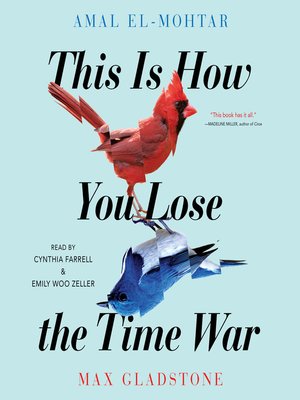
Looking at the ballot as a whole, it seems to me to fall into three pairings of two, with each pairing being representative of a particular trend. If I had to brand one of these three pairings least satisfying overall – or rather least interesting in terms of their candidacy for the Hugo Award – it would be that of Seanan McGuire and P. Djeli Clark, whose novellas might best be summarized as ‘old tropes, new takes’.
Seanan McGuire’s In An Absent Dream is the fourth instalment in her ‘Wayward Children’ series, exploring the limits of enchantment. I have not read the other novellas in the series, and in fact this is my first direct encounter with McGuire’s writing. The novella tells the story of Katherine Lundy, a child who finds herself at odds with other members of her family and with society’s expectations at large:
Most of the kids she went to school with couldn’t see past her father to her, and the few who tried never seemed to like what they found when they reached her. She was too opinionated and too invested in following the rules. She liked the company of adults too much, she spent too much time reading. She was everything they didn’t want to spend time with, and if it hadn’t been for her father and for the reluctance many of them felt to hit a girl, she would almost certainly have spent her weekends nursing black eyes and telling lies about where they’d come from.
It would be difficult for any SF fan or writer not to identify with at least some aspects of Lundy’s story, which is perhaps part of what has made this series so popular with readers. The writing is clear, inviting, professionally executed, all of which makes for a smooth and enjoyable ride, and I can imagine the Wayward Children series, with its youthful protagonists and sensitive introspection, being particularly popular among readers of YA. But there’s no getting away from the fact that In an Absent Dream feels like very familiar territory indeed. The ‘you can visit fairyland but there is always a price to pay’ narrative is one of the most enduringly popular story archetypes in fantasy, and McGuire’s effort here put me in mind of Graham Joyce’s Some Kind of Fairytale and most especially J.M. Barrie’s Peter Pan. This was a perfectly pleasant, mildly engaging story but not in any way unusual and I cannot see that the conversation would be enhanced by it winning a Hugo.
P. Djeli Clark’s The Haunting of Tram Car 015 sees us visiting a steampunk version of Cairo in which airships, flying tram cars and sentient AIs or ‘boilerplate eunuchs’ are all an accustomed and unremarkable part of the scenery. The story takes place in 1910, against a background of political realignment, social upheaval, and magical incursions. Our two hapless heroes, agents Hamed and Onsi of the Ministry of Alchemy, Enchantments, and Supernatural Entities – better known as the Spooky Boys – have been called in to investigate a mysterious and potentially dangerous haunting of one of the city’s semi-sentient tramcars. Initially suspected to be a djinn, the entity in question seems particularly disposed to attack women, and the agents are perplexed not only as to its intentions but where it might have come from:
Trafficking of mystical creatures into the country was a well known problem to the Ministry. But smugglers usually traded in things like unhatched rukh eggs or re’em calves – selling unwary collectors infant animals that quickly grew into unmanageable monsters. There’d been a craze over lightning birds two years back. Just five of the things had wreaked havoc for days: disabling trams, shutting down factory machines, and setting off the blackouts in the posher streets of Cairo now lined by electric lamps. The Ministry had to fly in a troupe of Sangoma diviners from Bambata City to recapture them. But Hamed had to admit that he couldn’t believe anyone would have willingly smuggled in the ghastly spirit that now resided in Tram 015. More likely, the thing had snuck into a shipment while still in Armenia.
The weird police procedural is now a familiar staple in science fiction and fantasy, with Daniel Jose Older, Ben Aaronovich and Charlie Stross being well known exponents. P. Djeli Clark brings both writing talent and a sense of humour to this popular subgenre, The Haunting of Tram Car 015 is entertaining and meticulously plotted, with wry political and social subtext on almost every page. The problem with the weird procedural though is basically the same as the problem with realworld procedurals in that they tend inexorably towards the formulaic. Although imaginative and smartly written, as with the McGuire there is nothing new or particularly notable here – a great little story but with nothing in particular that makes it stand out as being Hugo-worthy. In fact, I found myself wishing it had been nominated for a crime/mystery writing award instead, just to shake things up more.
For my second impromptu pairing, I would point to the Ted Chiang and Becky Chambers novellas as being the two core science fiction titles on the shortlist, both exploring traditional science fictional topics in individual ways. I actually read the Chambers last year, mainly out of curiosity. I don’t particularly get on with Chambers’s Wayfarers series, but I’d heard that this was different and so was interested to try it. To Be Taught, if Fortunate turned out to be one of those pleasant surprises that crop up every once in a while – a book that ought never to have worked for me yet nonetheless did. The novella’s premise is simple, and familiar: a bunch of astronauts head off into deep space to explore strange new worlds and catalogue their discoveries for the purposes of more detailed and targeted exploration in the future. The crew are put into suspended animation between planet-stops, and at each new awakening they find Earth’s relationship to their mission subtly changing. With their resources finite, the crew will have a momentous decision to make: continue with their mission in spite of the cataclysmic disruptions that are taking place at home, or return to Earth and a future that will be massively circumscribed by political and environmental catastrophe?
I’m obsessed with natural history, and so the basic drive of this novella – going down to a planet and observing new life forms and environments – held my attention and kept me absorbed. I loved the book’s quietness, its characters’ steady commitment to the tasks they were performing. I enjoyed their professionalism, their lack of interest in conflict or dicking about – in this respect they were pretty much the precise opposite of the crew in The Last Astronaut. Not a massive amount happens in terms of overt drama and I liked that, too – in the same way I enjoyed Rendezvous with Rama. In fact I’d draw a comparison between these two reading experiences in that both of them reminded me strongly of how and why I fell in love with science fiction in the first place.
Should the Chambers win a Hugo? I wouldn’t mind at all if it did, but I’m tending towards the view that much as I enjoyed it, there are other novellas on the shortlist this year that have a stronger claim on the award.
Similarly with Ted Chiang’s novella. Anxiety is the Dizziness of Freedom takes place in the near future, in a world where it has become technologically possible to communicate with parallel universes by means of a device called a prism. Prism users are able to speak with their ‘paraselves’, thus gaining insights into how they and their lives might have turned out had they taken different decisions. Using his trademark combination of thought experiment and character-driven narrative, Chiang examines the ramifications of such an invention, both on individual users and on society as a whole.
For me, Chiang is one of the finest modern exponents of ‘true’ ideas-based science fiction, with a clarity, complexity and directness of expression that few can match. You’ll never read a bad sentence from Chiang – and you’ll never find a sloppy thought process, either. The care and commitment he shows his art is a constant and continuing joy, as well as a reiteration of science fiction’s core values of innovation and intellectual engagement with a focus on ideas. That Chiang’s fiction is always emotionally as well as cognitively satisfying is doubly to its credit.
The only negative mark against this story with regard to its Hugo-worthiness is that it is ‘just’ another excellent Ted Chiang story. It does not break new ground for Chiang, in terms of either style or substance. We read it and love it without being particularly surprised by it, because this is Chiang, operating at the high level of excellence we have come to expect from him. With regard to the 2020 Hugo, I suspect he will end up being the victim of his own success.
Rivers Solomon was a finalist for the Astounding Award in 2018 and as I’ve not yet caught up with their debut novel An Unkindness of Ghosts, their novella The Deep was probably the work on this shortlist I was most keen to read. I’d already read a fair amount around the novella – this piece on how The Deep was born. for example, and so I already knew going in what the work was about. An innovative and exciting collaboration, The Deep draws its story from the mythos created by the electronica band Drexciya in the 1990s and further expanded by the experimental rap duo clipping. in their Hugo-nominated album Splendor and Misery.
‘SF is uniquely suited to address difficult political topics in any era, and Rivers is one of a handful of new writers that are going to drag our imaginations in the right direction,’ say clipping. in their afterword to The Deep. ‘Readers and listeners have before them three – let’s call them objects of study: the recorded oeuvre of Drexciya and its associated artwork and liner notes, the clipping. song ‘The Deep’ and Rivers Solomon’s novella The Deep. We prefer to imagine each of these objects as artifacts – as primary sources – each showing a different angle on a world whose nature can never be observed in totality.’
Yetu is of the Wajinru, a mer-people evolved from the children of African women thrown overboard from slave ships while en route to the plantations. As the Wajinru’s designated Historian, Yetu is the keeper of memories too bitter and cruel to be properly assimilated by the mass of her people. Yet the strain of being an Historian is colossal, for Yetu herself and for those tasked with her care. In order to truly gain their freedom, the Wajinru will need to take on their past. Only in taking on their past, will they come to a proper understanding of their future.
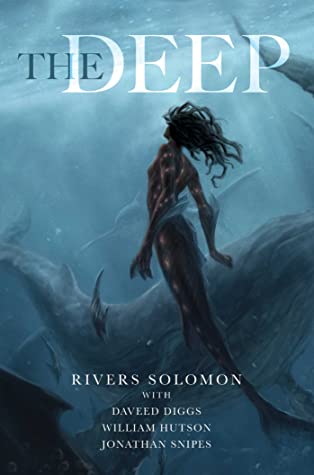
In its themes of silencing and being silenced, freedom and captivity and the right to be considered human, The Deep has clear and fascinating echoes of Hans Christian Andersen’s The Little Mermaid. I loved and appreciated these parallels, which cement The Deep firmly and irrevocably into the canon of fairytale literature. The Deep is so much more though than just another mermaid story, and I would argue that the work’s raw edge, its slightly unfinished quality adds greatly to its power,
My criticism would be that I think The Deep needed to be more fully realised in terms of both story and character. I wanted more – more detail around the women whose children became the original Wajinru, more history generally, more about Yetu. The Deep needed more space to unfold, and would have been still more effective as a full-length novel. Even so, this is a remarkable work, and I would urge you to read not only it, but also this excellent essay on ‘Afrofuturism in clipping.’s Splendor and Misery‘ by Jonathan Hay.
And after you’ve read that, you can head back over to Vector to read this interview with Amal El-Mohtar and Max Gladstone on the writing of This is How You Lose the Time War , the sixth and final novella on this year’s Hugo shortlist, the one I pair with The Deep for sheer originality and verve. This is How You Lose the Time War has been one of the most talked-about and award-nominated works of the year. As a reader who tends to resist jumping on bandwagons, this is the kind of hype that makes me instinctively recoil from a work, to both want and yet not want to read it. If I remember rightly (it’s only been a week but time can come to seem very dense when you’re trying to read six novellas as well as draft a novel) my personal push-pull around This is How You Lose the Time War was the reason I dreamed up this mini-project in the first place – to give myself an excuse to read the damn thing without feeling that I had capitulated to mere peer pressure.
Red and Blue are rival agents from alternate futures. Blue works for Garden, a world government based around ideals of environmental preservation and a humanity that remains true to its biological origins:
She notes the deep green of the trees. She measures the timing of their fall. She records the white of the sky, the bite of the wind. She remembers the names of the men she passes. (Most of them are men.) Ten years into deep cover, having joined the horde, proven her worth, and achieved the place for which she strove, she feels suited to this war.
Red works for the Agency, a mega-corporation that has taken humanity into a tech-based, post-human future where barriers of time, space and corporeality are of no account:
We grow in pods, our basic knowledge flashed in cohort by cohort, nutrient balance maintained by the gel bath, and there most of us stay, our minds flitting disembodied through the void from star to star. We live through remotes, explore through drones – the physical world but one of many, and uninteresting by comparison to most. Some do decant and wander, but they can sustain themselves for months on a charge, and there’s always a pod to go back to when you want it.
Ostensibly deadly enemies, Red and Blue discover ties of intellectual and spiritual kinship that run deeper than any allegiance to the governments that hire them, that seek to use them to bend the time-stream to their own ends. Communicating through encoded messages across the strands of deep time, they begin to fall in love, a relationship that will inevitably put their futures in danger, at both a personal and an interplanetary level. As their handlers become aware of their duplicity, will Red and Blue be forced to betray one another, or will they find a way to outrun time itself? This is How You Lose the Time War asks serious questions about the nature of power, the unavoidable link between unmitigated idealism and despotism, the toxic legacy of violence under any banner:
Red wins a battle between starfleets in the far future of Strand 2218. As the great Gallumfry lists planetward, raining escape pods, as battle stations wilt like flowers tossed into flame, as radio bands crackle triumph and swiftskimmers swoop after fleeing voidtrails, as guns speak their last arguments into mute space, she slips away. The triumph feels stale and swift. She used to love such fire. Now it only reminds her of who’s not there.
The moments in reading I cherish most are those moments in which my assumptions are proved to be wrong. When I change my mind about a book I previously disliked, or when I fall head over heels in love with a book I felt convinced I was going to hate. Reading This is How You Lose the Time War has been one of those moments. Reader, I loved it. What I loved most about it is the way it absolutely proves my theory that it’s not the material that maketh the masterpiece, so much as the way in which that material is put to use. The quality of execution, in other words. This is How You Lose the Time War takes many of the elements of contemporary, media-derived SFF – I get Doctor Who vibes from this, New Space Opera vibes, massive Killing Eve vibes – and raises them, through the power of language, of insight, of literary allusion, of formal innovation to the level of a classic in the making. The result is a work that feels utterly of the present moment, yet contains within it the depth of field, the knowingness and literary excellence that will enable it to stand the test of time.
There are moments in which you suddenly become aware that you are reading a work that is destined to become a landmark of the field. Bold, brilliant, and – yes, I cried – unashamedly moving, This is How You Lose the Time War is a one such, a stimulus to both heart and mind. It wins my vote for the Hugo, unreservedly.
